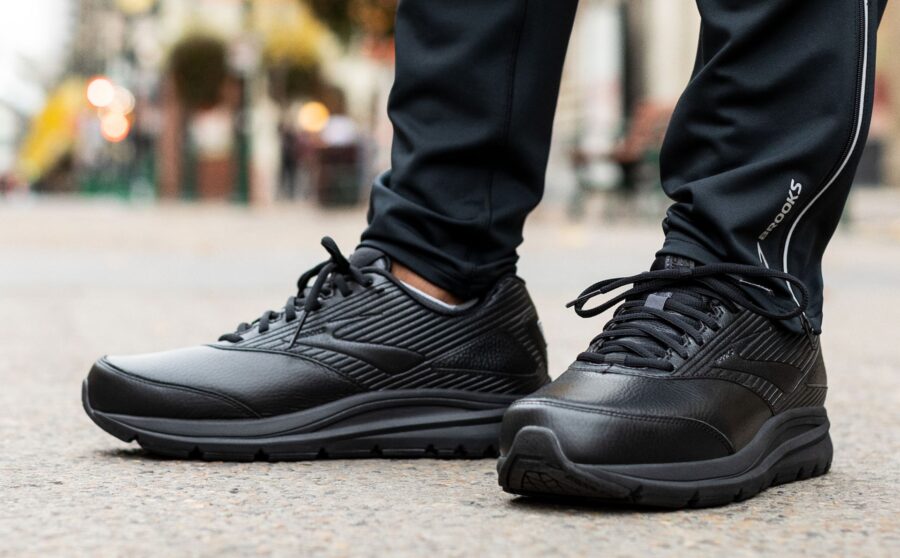How long should a pair of running shoes last? In practical terms, there’s no general lifetime estimate to ascertain the exact period or month the shoe will run obsolete. It all comes down to miles- though you can do some calculations and figure out how many months a particular pair will last.
As for runners, it’s not easy to let go of a favorite pair of shoes that served so well. However, we can’t just forget those runners who seek the slightest taint of wear and tear blemish or such to justify the call for a new pair.
The temptation to get a new pair is always present, considering the whole variety of great looking models out there. Still, you may have come across a pair of tracks that looks as if it’s been in use over the last decade, showing obvious holes and compromised structure.
Shoe Replacement Safe Bet
According to foot experts, you should replace your running shoes every 500-700 kilometers. That’s approximately 300-500 miles, equating to approx four to six months or so, assuming you run 20 miles per week.
Brooks, one of the more prominent footwear brands, recommends that you replace its minimalist or lightweight designs every 250-300 miles.
However, the rate at which shoes wear down may vary from person to person, so this estimation might not be accurate for everyone.
For instance, persons who run on rough terrain or very hot asphalt grounds are bound to get their shoes wearing down quicker than individuals who run on smooth, shaded trails.
Additionally, the environment, the bodyweight, foot strike, and running style also affect the life of your shoes. A 100 pounds person with an average stride may enjoy more miles on a pair of shoes compared to a 200-pound runner.
Still, below are some of the indicators that your shoes need a replacement.
The Shoes Are Falling Out
This is a semi-evident indicator. If your shoes are loaded with holes, more than what would be considered reparable, then then it’s high time to let them go. They might still feel great to walk or run on, but you’ll be leaving yourself vulnerable to injuries.
Uneven tread shows that the shoe cushioning is most likely far from being fresh or rather safe. That means your joint system is taking a good deal of avoidable impact on every stride you make.
If the cushioning, the footbed, and the shoe’s overall construction are falling out, you will be wise to invest in a new pair rather than visiting a podiatrist due to foot issues and physical therapy.
Note that, even if the shoes’ exterior still looks amazing, factors like moisture, heat, and breathability might be compromised, which will subside the shoe’s overall longevity. Go for shoes designed with high-grade foam in the footbed, like Brooks, for that matter.
Your Feet Tend to Develop Blisters
If you find yourself avoiding pedicure or other foot-related things that you used to due to blisters you’ve been accumulating throughout your running session, then you might want to consider new shoes.
You may be developing blisters because your shoes are too narrow in the forefoot, especially if the blisters are on the tips or the tops of your toes. When buying, be sure to choose something half-size larger for comfort sake.
If you often develop blisters in the heel area, that’s another sign of ill-fitting shoes, and the shoe could be too narrow or too wide. Getting a perfect size shoe isn’t always easy, but you can head to your local run specialty store and have your feet measured, from toe box, heel, and the width.
Also Read: How To Walk Without Creasing Your Shoes
You’ve Been in The Same Pair for +500 miles.
You can hit a lot of mileage on your favorite running shoes. If you mostly run on the treadmill, you may not want to replace your shoes as frequently as you would if you’re hurtling tough roads and trails.
Usually, the safe bet to replace your shoe averages between 300-500 miles. Run tackling applications like Strava will help incorporate your running shoes in your profile such that you can observe the mileage and know whether it’s time to go for a new pair.
You Experience Every Rock And Pebble During Performances
This one goes to the cushioning and padding of the shoe. If you feel every rock, pebble, root, or stone, or your feet feel wrecked and worn out after running; you certainly need a new shoe.
Likewise, if you’re road running and tend to have a more profound experience than just fatigue, you need to change the shoes. The point is to toss them for a greater course, something that can make you feel safe and comfortable on the ground.
You Count On Your Favourite Pair for Too Multiple Activities
If you use one pair of shoes for trail running, road running training, walking, or such, you definitely need to have another pair to complement.
Well, we understand. You might have much love for your perfectly broken-in running shoes, but wearing the same pair for multiple activities isn’t so feasible, not only to your feet but overall body wellness as well.
Different shoes are designed for different activities. Wearing trainers on a running session or vice versa can give rise to foot issues because of using the shoe for the wrong purpose.
Moreover, even using just one pair for one activity, running for that matter, every day might cause foot problems. So if you run daily, you’ll be better off with more than just one pair.
Bottom Line
Lastly, after replacing your old running shoes, truly let them go for good. It would be best if you don’t count on them for other activities, either. Worn out shoes remain worn out, irrespective of the chores. You don’t want to suffer some injuries while having a new pair of running shoes in your closet.

